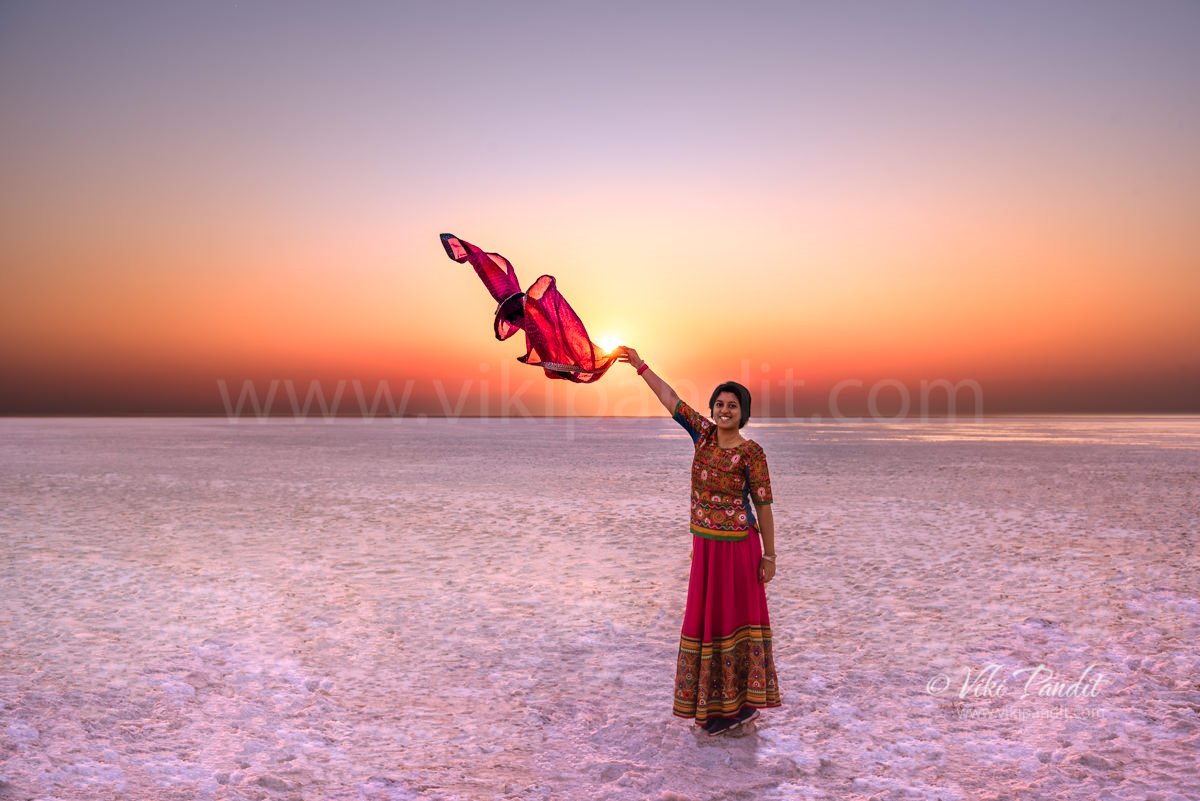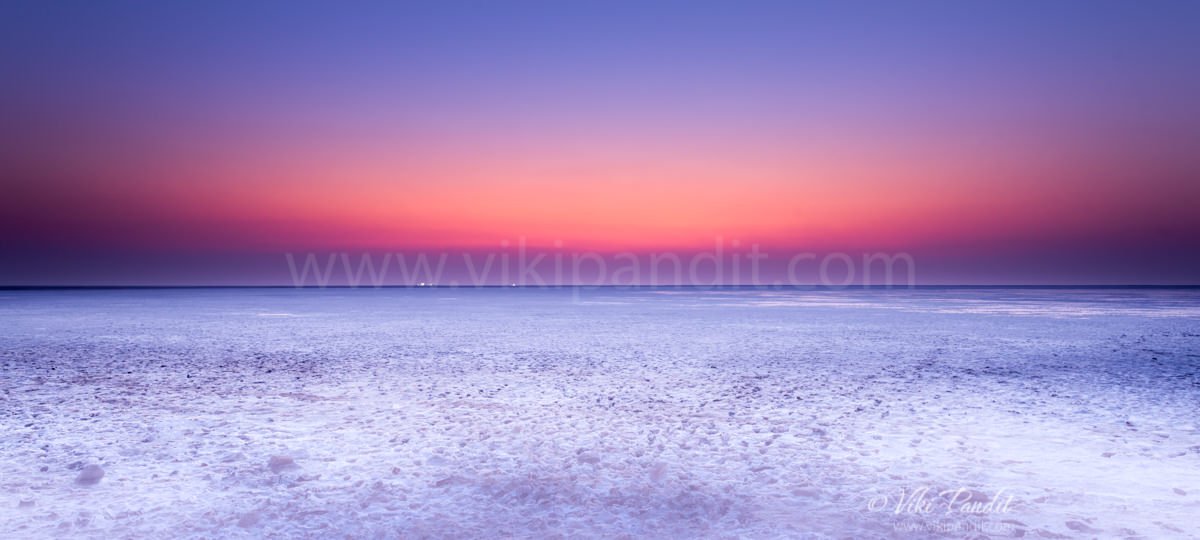I am standing at the edge of the White Rann, an endless stretch of white that goes all the way from Gujarat’s Kutch district to Pakistan’s Sindh. The tattooed Camels have helped us reach this point from where everything is a blank white of nothingness.
The vast expanse of uninterrupted whiteness makes me feel as if I was miraculously zapped from the grim Indian desert to the frozen white lakes of Japan, only I didn’t need the safety of my hefty gloves or winter jackets. Oh yes, it looks like a frozen lake but looks can be deceiving. This is one of the most unforgiving places in India with summer temperatures averaging and peaking at 49.5 °C. Thankfully it is November when it is pleasantly warm.
Centuries ago, the Rann of Kutch was part of the sea until an earthquake turned the exposed sea bed into a sprawling desert. The name “Rann” comes from the Hindi word ran (रण) meaning “desert”. Today, it is a vast expanse of arid land, devoid of habitation, stretching out to the Arabian Sea.
The salt desert spreading over 30,000 sq. km gets submerged underwater during the monsoons. The Luni River, which originates in Rajasthan, drains into the desert in the northeast corner of the Rann. The Rupen from the east and the West Banas River from the northeast also feed freshwater into the desert, making it the world’s largest salt marsh.
Even though it was November the salt was still slimy and difficult to walk over. Just below the white salt lies gooey black mud. The Sun was dipping fast. Mani in her beautiful Ghagra was trying her best to help me take a shot of the sunset over the White Rann. I think I will talk about this photo for years to come.
The low-lying mudflats of the White Rann, which is all but 15 meters above sea level, fill with water during the monsoon between June to September, and then gradually dries out over the rest of the year leaving behind the saline crust that hardens to form the signature luminous white color of the desert. By January when temperatures reduce dramatically and can go below 0 °C, the marsh is transformed into an unending white desert.
In the wee hours of twilight, we were gifted with the sight of the Moon rising in the opposite direction. Most of the tourists had left by then and it was easier for us to take this shot via the tripod.
The salt desert is about 100 kilometers away from the nearest town of Bhuj and that allows the place to be free of random by-passers. There is a quietness to the place, allowing me to ponder. I even forget that I haven’t click a single photo of the white desert in its entirety. No worries there because I will be coming back.
We stayed back till the sun disappeared over the horizon and darkness engulfed us.
Our experience of Rann of Kutch was made even memorable by our stay in the premium tents of Rann Utsav. If you want to know more read the full story here.
Disclaimer: The information presented in this article is based on the time I visited the premises. Note that there might be changes in the prices of merchandise and admission fees that might have occurred after this article was published. At times the facility might also be closed for repairs or for variety of other reasons. Kindly contact the facility or facilities mentioned in this article directly before visiting.
Usage of this site indicates acceptance of my Terms and Conditions.
Credits: The historical information presented herein is gathered mostly from local guides that were re-inforced via historical writings.





I also visited this Temple in August 2024. It is really a wonderful Temple which requires more time to see all the details. Narayan dear park and these temples are worth to see. My Indian friend has described very well. I am also writing the things which I saw during my Japan visit and preparing a book for Marathi readers’ Chala jag phirya ‘